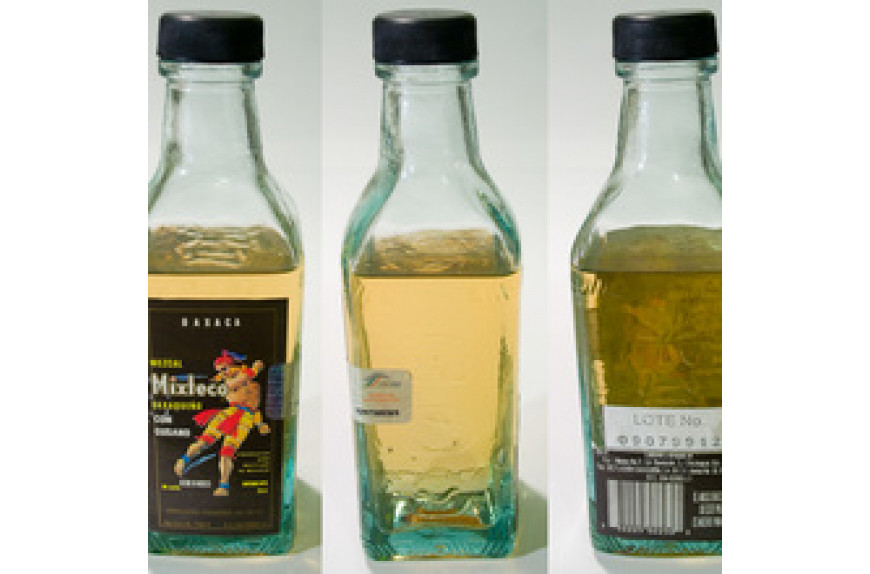Tutto quello che c'è da sapere sul Mezcal

Tutto quello che c'è da sapere sul Mezcal
Tags
Categorie
Questo distillato Messicano che è, sì, "quasi" uguale alla tequila, ma che comunque differisce per alcune importanti caratteristiche! Mezcal: la materia prima Si tratta sempre della pianta dell'agave, ma sono ben otto i tipi di agave che si possono trovare all'interno di un mezcal, anche se la più coltivata è l'agave espadin, conosciuta anche come agave angustifolia haw. Un'altra differenza molto importante consiste nel fatto che il mezcal si produce solo con succo di agave 100%, mentre nella Tequila si possono utilizzare fino al 49% di zuccheri aggiunti (ovviamente la Tequila migliore è prodotta con 100% di agave). Mezcal: la zona di produzione Il Mezcal si produce in tutto il Messico ad eccezione della regione del Jalisco, perchè vi si produce la Tequila! Il “verme”... In una bottiglia di Mezcal accade di frequente di trovarci un "Gusano", che altro non è che una larva di farfalla notturna che vive nell'agave. Esistono molti Mezcal "contadini" prodotti in piccole distillerie artigianali e spesso per la solita partita di distillato vengono usate bottiglie diverse proprio perchè anche queste sono fatte a mano! Più artigianale di così :-) Quindi anche per il Mezcal si parla di piña e si parla ancora di più di fòsse nel terreno in cui si accendono fuochi dopo avervi approntato una sorta di forno in terracotta e pietre, bruciando le parti della pianta che non si usano, come invece le foglie, per la produzione. La storia del Mezcal risale al tempo di Aztechi e Maya. È rimasto ancora così "antico" - non voglio usare il termine rudimentale, ma "genuino"; questa pianta è così rispettata a ragione, visto che è stata una fonte di sostentamento per questo popolo: difatti l'agave è ricca di acqua, ora pensate al clima del Messico... Questa pianta era una fonte di sostentamento durante le transumanze. Ma torniamo alla produzione: la cottura nei forni interrati dura dai tre ai cinque giorni. Le piñas vengono quindi frantumate in torchi alimentati dalla forza degli animali. Si ottiene così un succo zuccherino, che, dopo la fermentazione con lieviti indigeni, viene distillato in alambicchi discontinui (che bello!). Dalla prima distillazione si ottiene lo xixi, un liquido che porta 20, massimo 25 gradi. Nella seconda distillazione si ottiene il Mezcal vero e proprio, che arriva ai 60 gradi. La distillazione avviene in piccoli alambicchi di rame per un massimo di 200/250lt. Da questo quantitativo si ottengono 50lt di Mezcal come prodotto finito: anche in questo caso, come in tutte le distillazioni discontinue, la “testa” e la “coda” devono essere eliminate. Solitamente il Mezcal non viene invecchiato; la maggior parte del prodotto viene imbottigliato dopo la distillazione, ma ci sono prodotti invecchiati che secondo la regolamentazione si identificano come: Mezcal Joven: prodotto non invecchiato; Reposado: prodotto che riposa in botti (di solito americane) per pochi mesi; Anejo: prodotto che invecchia almeno un anno in botte. È permesso usare coloranti naturali, come erbe e radici o miele e caramello da zucchero di canna. Il Gusano: non solo nel Mezcal… Questo vermicello che se ne vive beato all'interno dell'agave diventa un piatto prelibato per i messicani che lo servono fritto con sale e peperoncino. La tradizione vuole che sia un cibo allucinogeno e afrodisiaco; difatti per la seconda virtù ci rifacciamo agli Dei e più esattamente a Mayatl (nome dell'agave in certe zone del Messico), dea della fertilità, la quale nutriva di Mezcal i sui sudditi dai suoi quarantamila seni. Un giorno Mayatl si sentì crescere un verme nel cuore che le provocava eccitazione e s'innamorò di un guerriero attaccato ad uno dei suoi seni, ma come è noto, l'amore tra un umano e una divinità non può realizzarsi, quindi Mayatl donò al guerriero il verme, lui lo mangiò e si trasformò così in un dio, e, grazie alle doti afrodisiache di Gusano, poté amare Mayatl per 7 giorni e 7 notti ...ininterrottamente. A questo punto non ve la comprereste una bottiglia di Mezcal..? ;-)
